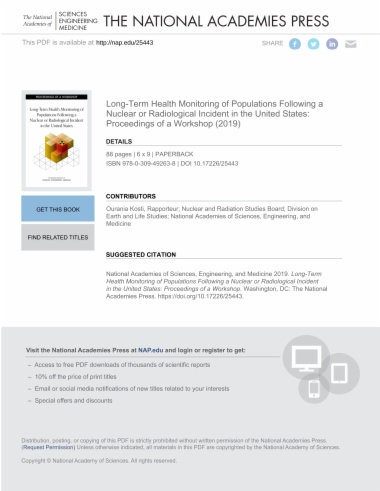

Accidents and terrorist attacks that lead to the release of radioactive materials can cause deaths, injuries, and a range of psychosocial effects in the surrounding community and team of emergency responders. In the United States, federal, state, and local agencies respond with the necessary resources to address the consequences of nuclear and radiological incidents and monitor the affected population. Following the 2011 Fukushima Daiichi Nuclear Power Plant accident and the 2017 Gotham Shield National Level Exercise, the CDC recognized an opportunity to improve their practices by establishing a more efficient and timely health effect surveillance system before another incident occurs.
On March 12-13th, 2019, the National Academies convened a workshop to discuss the process for preparing a radiation registry for monitoring long-term health effects of populations affected by a nuclear or radiological incident. Participants assessed existing information, useful practices, and tools for planning a radiation registry that will enhance incident monitoring and response methods. This publication summarizes the discussions and presentations from the workshop.